Dutch Shepherd Dog Breed Information
The Dutch Shepherd is a true all-rounder among dogs, tracing its roots back to the Netherlands, where it was initially bred to herd sheep. Today, this breed is known for its sharp intelligence and muscular build. It has taken on various roles beyond herding, such as working in police forces and providing emotional support to those in need.
The breed’s ability to adapt is just as impressive as its friendly nature, making it an ideal fit for professional settings and home life. When looking at the Dutch Shepherd’s journey through time, we must consider its past and the details of its care. This will help potential owners understand what to expect when keeping their dogs healthy and happy.
The Dutch Shepherd is not just a skilled worker; it’s also a loving pet that can enrich your home. Future owners must know about the breed’s exercise needs, dietary requirements, and grooming to ensure their furry companion stays in tip-top shape.
Key Takeaways
- Dutch Shepherds excel in diverse roles, from police to support.
- They require regular exercise, proper diet, and grooming.
- Dutch Shepherds are affectionate, making them great family pets.
Quick Facts
The Dutch Shepherd hails from the Netherlands and is a well-proportioned medium-sized dog. It stands out due to its three coat types: short, long, and rough. Males and females of this breed typically weigh between 42-75 pounds.
These dogs are celebrated for their loyalty, intelligence, and adaptability, making them excellent at dog sports like herding and agility and protective work in disciplines like Schutzhund. Dutch Shepherds are robust and usually live for 11-14 years, but they can be prone to genetic issues such as hip dysplasia.
Major kennel clubs like the AKC and UKC recognize that they can adjust to living in an apartment if given enough exercise to meet their energetic nature.
Dutch Shepherd Dog Breed Pictures
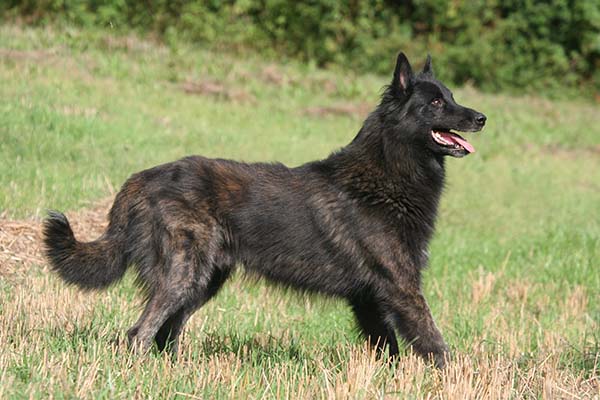

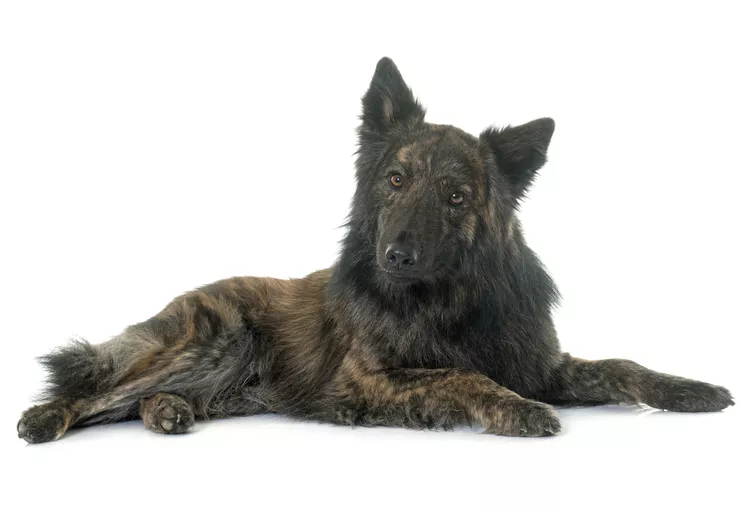
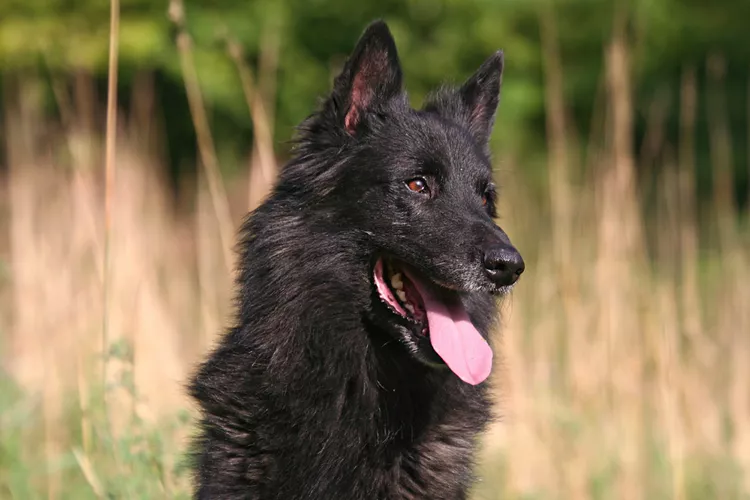
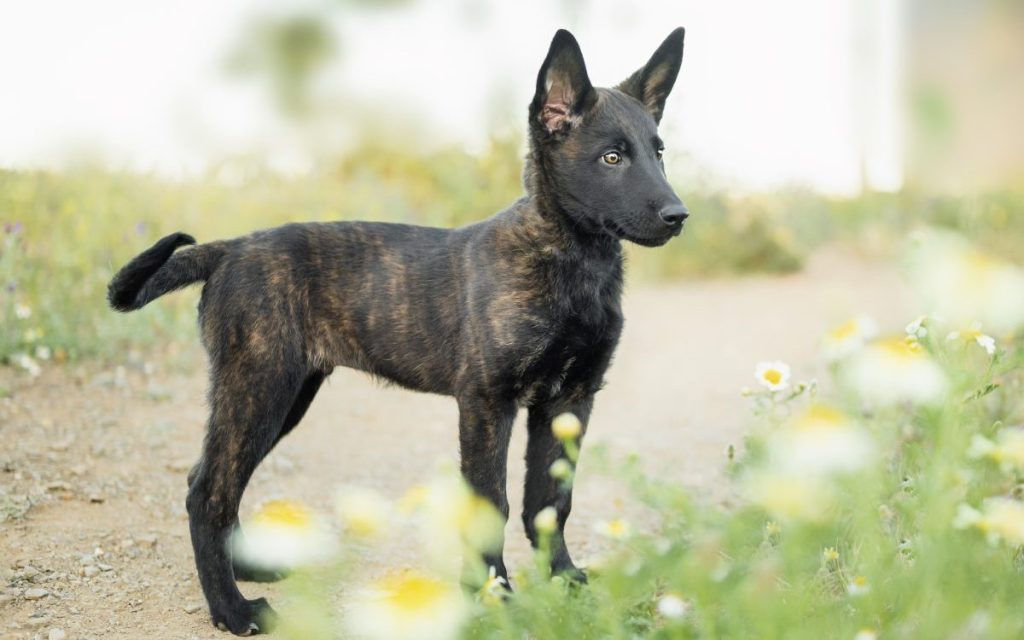
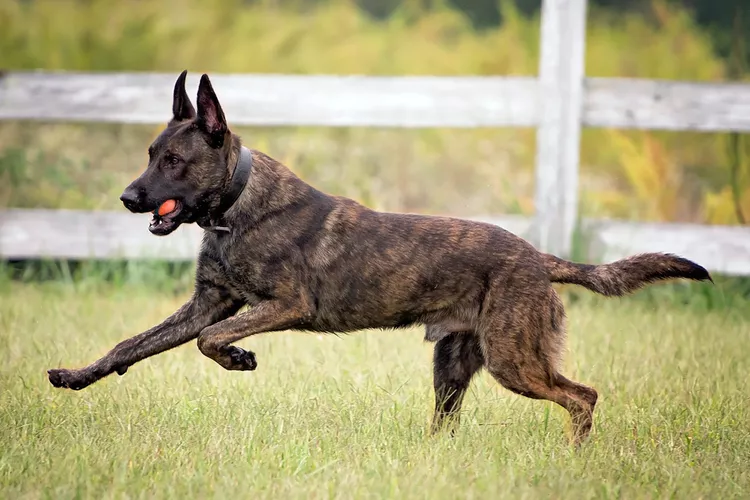
Overview
Building on their versatile background, Dutch Shepherds offer a multifaceted skill set that extends beyond their traditional herding roles to include various service capacities in contemporary settings.
As a medium-sized breed, the Dutch Shepherd exhibits a robust constitution, standing between 21.5 and 24.5 inches and weighing 42-75 pounds. Originating from the Netherlands, this breed demonstrates pronounced loyalty, dependability, and an energetic disposition.
The German Shepherd comes in three distinct coat varieties: short-haired, long-haired, and rough-haired, each necessitating different grooming strategies. Despite a low incidence of genetic health issues, proactive veterinary oversight and regular grooming are imperative for optimal health maintenance.
The American Kennel Club (AKC) and the United Kennel Club (UKC) recognize the Dutch Shepherd, with the latter serving as the principal registry in the United States.
Breed Hallmarks
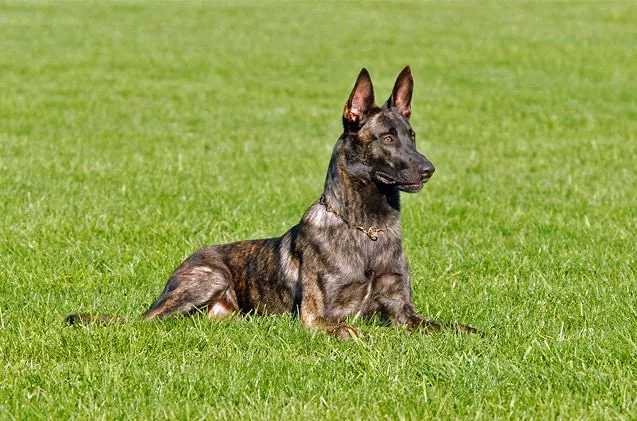
The Dutch Shepherd is known for its medium size and strong muscles, perfect for a dog from a herding background. These dogs are robust and adaptable, excelling in different dog sports and tasks because of their past work with animals. They have three types of coats, each needing a different care level. These dogs are generally healthy, but it’s still good to watch for any health issues.
Grooming Needs for Different Coats
- Short-Haired: These coats are easy to care for.
- Long-Haired: These dogs need a bit more grooming.
- Rough-Haired: They require the most grooming attention.
Size and Health Information
Dutch Shepherds are typically between 21.5 and 24.5 inches in height. They weigh around 42 to 75 pounds, making them neither too big nor too small. These dogs are expected to live about 11 to 14 years. They’re known to have fewer genetic health problems than other breeds.
Breed Evolution
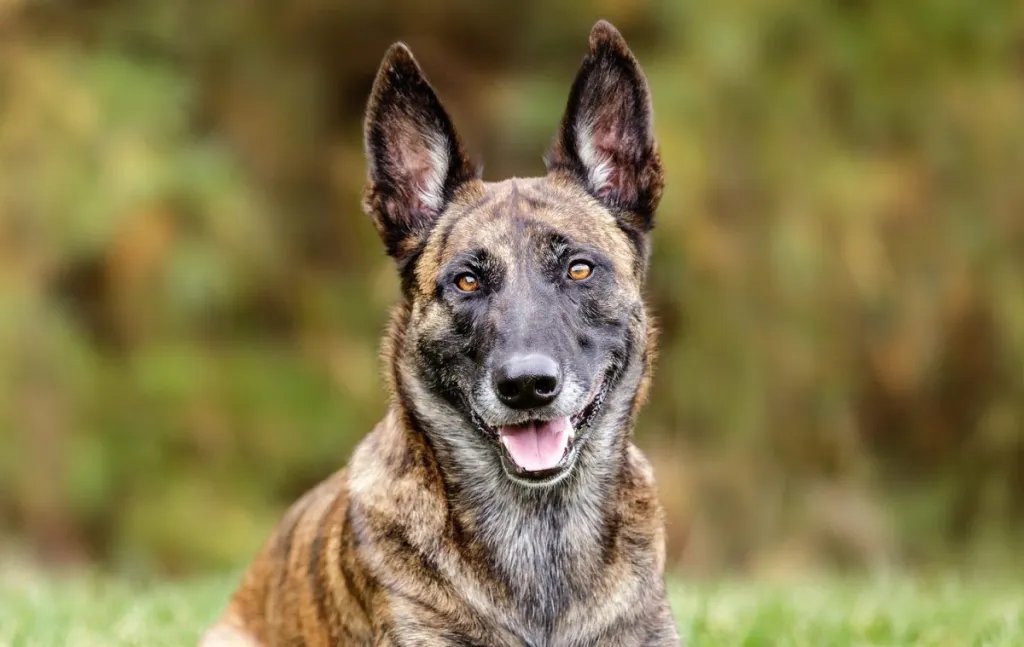
The Dutch Shepherd’s origins are deeply rooted in the solid herding culture of Europe, showcasing the breed’s versatility and practicality. The development of the Dutch Shepherd involves significant shifts:
- The breed began in the rural areas of the Netherlands as a herding dog.
- The Dutch Shepherd’s duties expanded to include security and support services roles.
- After facing a decline, the breed returned thanks to committed breeding efforts.
These points illustrate how the Dutch Shepherd went from a local farm dog to a widely recognized and capable breed.
Origins in Europe
Emerging from the pastoral landscapes of the Netherlands, Dutch Shepherds were initially bred as versatile farm dogs, adept at herding and safeguarding livestock. These canines were pivotal in the agrarian society, fulfilling a multitude of roles, from patrolling borders to alerting farmers of intruders.
The breed’s first standard was established to solidify their unique identity, mandating a brindle coat in 1914 to differentiate them from their German and Belgian counterparts. The Royal Dutch Shepherds’ population suffered a drastic decline due to the advent of modern farming practices and was nearly decimated during World War II.
To revitalize the breed, post-war recovery efforts involved crossbreeding with Belgian Shepherd Laekenois and other dogs. Contemporary breeding programs under Dutch Shepherd breed clubs focus on augmenting the population and broadening the genetic pool to safeguard their future.
Working Dog Heritage
The Dutch Shepherd has moved far beyond its beginnings as a simple herding dog. These dogs have become versatile workers, excelling in tasks from police dog work to aiding those with disabilities. Their transformation began as they shifted from herding livestock to taking on challenging jobs in the military and law enforcement. This was possible thanks to their quick learning and boundless energy.
After World War II, breeders focused on strengthening these qualities, which saved the Dutch Shepherd from the brink of extinction. These dogs are known for their strong work ethic and original talent for herding, which they still possess. Their remaining vigilant, agile, and obedient skills make them perfect for various tasks.
Kennel clubs like the FCI and UKC acknowledge the breed’s excellent working capabilities, ensuring its continued recognition as a top working dog.
Recovery From Decline
Reflecting on the journey of the Dutch Shepherd from the brink of disappearance, concerted efforts have revived the breed, with crossbreeding playing a crucial role in its evolution and growing presence.
Initially used for herding alongside modern farming methods, the breed has transitioned to various roles such as police work, search missions, and support tasks.
The Dutch Shepherd Club has promoted responsible breeding to increase their numbers and maintain genetic health.
However, the Dutch Shepherd is still uncommon, especially in the United States.
Its recognition by major kennel clubs has helped it gain international attention, proving its adaptability and resilience in its three distinct coat types.
Physical Dimensions

The Dutch Shepherd is known for its athletic and well-balanced body, which suits its original role as a working dog. The critical measurements for males include a height of 22.5 to 24.5 inches, while females are generally between 21.5 and 23.5 inches tall. Both male and female dogs should weigh between 50 to 70 pounds, which is ideal for their medium size.
Their body proportions are crucial for their agility and overall health, ensuring they can efficiently perform various tasks. A Dutch Shepherd’s build is designed to be harmonious, contributing to their ability to move quickly and with stamina. These standards are not just about aesthetics; they ensure that dogs can lead active, healthy lives.
Breed Size Standards
Dutch Shepherds typically stand between 21.5 and 24.5 inches tall at the shoulder and weigh between 42 and 75 pounds. These figures are in line with the breed’s established size guidelines.
The guidelines are crucial as they ensure the Dutch Shepherd retains the right build for herding, which includes being muscular, well-postured, and agile.
The breed’s three coat types—short, long, and rough—are part of its unique look and help it perform well in various environments. Breeders follow these guidelines closely to preserve the dog’s physical traits essential for its traditional work and maintain the breed’s unique identity.
Weight Range
Male Dutch Shepherds weigh 42 to 75 pounds, whereas female dogs tend to be lighter, weighing between 42 and 65 pounds. Their sturdy build helps them perform well in a variety of jobs.
The United Kennel Club (UKC) and other well-known kennel clubs have acknowledged the breed. The physical size of a Dutch Shepherd is essential for its health and ability to work.
There’s a noticeable difference in weight between male and female Dutch Shepherds, which is considered when looking at the breed’s standards and assessing the health of individual dogs. Breeders committed to the breed’s welfare adhere to these weight ranges.
This helps the dogs live longer, healthier lives and prevents health issues if a dog is too heavy or light for its breed.
Height Measurement
Height measurement is crucial when evaluating the stature of Dutch Shepherds. Male Dutch Shepherds’ height usually falls between 22.5 and 24.5 inches, while female dogs tend to be slightly shorter, ranging from 21.5 to 23.5 inches. These dogs also come with different coat types: short, long, and wire-haired, each requiring its grooming practice. The breed standards are strict, and dogs with extensive white markings on their body, except for a small patch on the chest, are disqualified.
The Dutch Shepherd’s well-balanced body shape gives it an agile and robust appearance, suitable for various tasks. To measure their height accurately, one should measure straight down to the ground from the withers—the highest point of the dog’s shoulder blades. This method ensures a consistent and accurate measurement.
Body Proportions
The Dutch Shepherd stands out with its well-proportioned body, combining strength and agility. This dog breed has a sturdy build and is known for its weight range of 42-75 pounds. It stands about 21.5-24.5 inches tall. Their slightly longer body shape gives them a robust appearance and makes them versatile in their functions. They are especially good at herding and guarding thanks to their powerful back legs, which enable quick and robust movements.
In terms of appearance, Dutch Shepherds have three types of coats: short, long, and wire-haired. They all come with a thick undercoat that keeps the dog warm and safe in bad weather. The males usually look more imposing than the females, but both genders balance their height and body length well. This balance is critical for their health and stamina, typically around 11-14 years.
Growth Patterns
When observing the Dutch Shepherd’s development, it’s clear that these dogs grow consistently. They typically reach their full height when they’re anywhere from 12 to 18 months old. Male dogs usually end up being about 22.5-24.5 inches tall and weigh between 50-70 pounds, while female dogs are somewhat smaller, standing around 21.5-23.5 inches and having a similar weight range.
As for their distinctive coat, it’s not only rugged and versatile but also changes color as the dog grows up, settling into its final shade once the dog is fully grown. Keeping an eye on how Dutch Shepherds grow helps ensure they stay healthy and strong.
Temperament Traits
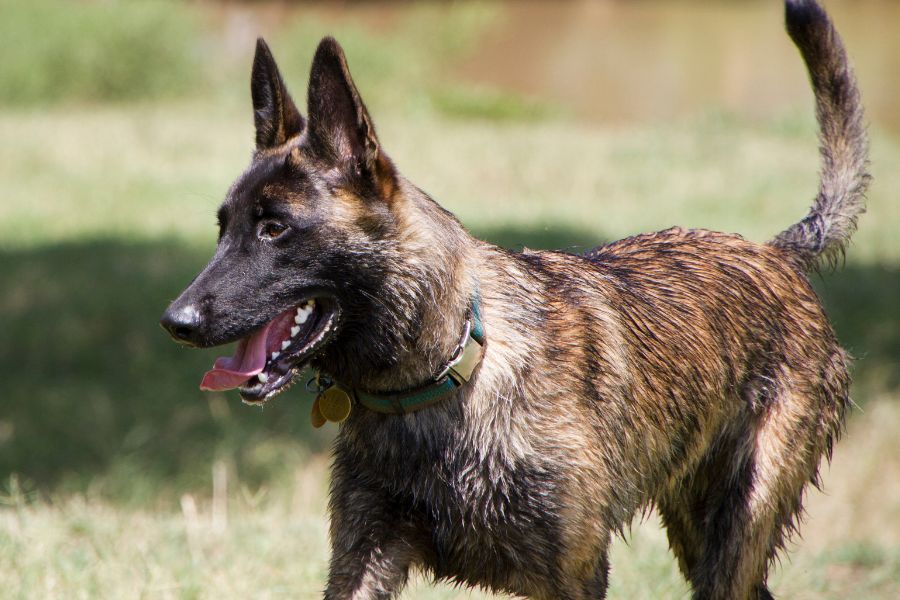
The Dutch Shepherd dog is known for its versatility and is often sought after for various tasks. These dogs have a set of distinct traits that make them suitable for different roles.
They are loyal and have strong protective instincts, making them excellent guard dogs for families.
Their high energy demands they stay active, needing plenty of exercise and mental challenges to remain content.
The intelligence of Dutch Shepherds makes it a breeze for them to train. They can learn obedience and carry out complex tasks with relative ease.
Owners should provide a well-organized setting to keep these dogs engaged. This helps channel their natural behaviors effectively and prevents potential issues arising from boredom or lack of stimulation.
Loyal Family Protector
Dutch Shepherds are the epitome of loyalty and have proven to be excellent protectors in family settings. They’re always on the lookout, demonstrating a watchful nature that is key to their role as guardians. These dogs are highly reliable and known for their alertness and protective instincts. They are independent thinkers and very smart, which makes them easy to train.
The herding background of the Dutch Shepherd gives them a balanced temperament; they’re neither too aggressive nor too timid. This balance allows them to work on their own when necessary. They’re also very adaptable, making them perfect family pets who are always eager to make their owners happy.
Besides being great companions, Dutch Shepherds excel in various jobs, including police work, search and rescue operations, and serving as guide dogs for those with disabilities.
High Energy Levels
Dutch Shepherds are known for their loyalty and protective instincts, making them great family protectors. However, they are also high-energy dogs that need plenty of exercise and mental challenges to stay healthy. They thrive on structured routines, including physical activity and brain games, to prevent boredom-related behavioral problems.
Their natural athleticism makes them perfect for dog sports, which can satisfy their need for both physical exertion and mental engagement.
Providing enough activity to burn off their energy is essential to keep a Dutch Shepherd happy. Otherwise, they might start to act out. Anyone considering getting this breed should be ready to lead an active lifestyle to match the dog’s energy.
Intelligent Dog and Trainable
Dutch Shepherds are known for their sharp intellect and are easy to train. They quickly learn new tasks thanks to their high intelligence and knack for following commands. These dogs have a strong personality from their herding background, but they’re not aggressive or timid. This makes them great training partners.
Training a Dutch Shepherd is relatively straightforward because they love working with human handlers. They also have a natural drive to work on their own. They benefit from varied and exciting training sessions to keep their minds active. Dutch Shepherds excel in many roles, such as police work, search and rescue, and service dogs.
Prey Drive Instincts
Dutch Shepherds are naturally inclined to use their prey-drive solid instincts due to their history as herding dogs and protectors of livestock. These dogs have impressive senses, especially their sharp eyesight, and quick reactions, making them prone to chase anything that moves. You might notice them stalking or suddenly chasing after small animals or objects that catch their attention.
Training and socializing Dutch Shepherds properly is crucial to managing their instinctual behaviors. This can prevent them from inappropriately chasing things like cars or other pets.
Fun activities like agility courses, obedience training, and scent work can help direct their energy into positive outlets. These exercises keep their minds and bodies active, ensuring they’re well-behaved and happy.
Socialization Importance
Socialization is critical for Dutch Shepherds. Training Dutch Shepherds to behave well starts with socialization. It’s what helps them get along with people other animals, and to feel at ease in new places.
The Dog Club of America points out how crucial it is for Dutch Shepherds to meet different people and situations early on. This exposure is critical to building their confidence and ability to adapt.
A Dutch Shepherd that has been around the block is less likely to show unwanted behaviors like fear, aggression, or anxiety. Socializing your dog sets the stage for a life with a well-behaved, obedient companion.
Plus, if your Dutch Shepherd is used to various experiences, they’re more likely to be chill and fit in well with the community. This also makes your bond with them more robust.
Wellness Considerations
The robust physiology of the Dutch Shepherd necessitates a comprehensive approach to wellness, encompassing preventative and ongoing health measures.
Critical considerations for maintaining optimal health in this intelligent breed include:
- Proactive health screening tests to identify and manage hereditary conditions,
- A balanced diet and nutrition tailored to their energetic needs,
- Adequate exercise requirements to sustain their high levels of physical activity and prevent behavioral issues.
Health Screening Tests
Regular health checks are necessary to protect the well-being of Dutch Shepherds. These should focus on conditions that can be passed down through their genes, such as hip and elbow dysplasia and inflammatory myopathy. Despite Dutch Shepherds having fewer genetic health issues, regular check-ups using X-rays and DNA tests are vital.
The rough-haired type of this first breed standard should be tested for goniodysplasia, an eye problem they’re prone to. It’s also crucial to watch for other hereditary issues like allergies, masticatory myositis, pannus, cryptorchidism, and inflammatory bowel disease.
Keeping up with vet visits ensuring they eat well and maintain a healthy weight is the best way to prevent these health problems.
Maintaining the Health of Your Dutch Shepherd
Consistent vet visits are part of ensuring your Dutch Shepherd stays healthy. Along with balanced nutrition and keeping them at a proper weight, these steps are essential in reducing the likelihood of health issues. Regular tests can spot problems early, making treatment more accessible and helping your dog live a longer, happier life.
Diet and Nutrition
Regular health screenings for Dutch Shepherds are crucial. It’s important to tailor their food portions to their size, age, and activity level to prevent obesity and its health risks. These active dogs need a balanced diet with plenty of high-quality protein, healthy fats, and vital nutrients to keep them in top shape and maintain a healthy weight.
Regular feeding helps keep their energy levels steady and avoids stomach issues. Ensuring they always have fresh water, especially after being active, is critical to their hydration. If you watch what your Dutch Shepherd eats and talk to your vet when necessary, you can catch and fix any dietary problems early on.
Ensuring your dog stays happy and healthy.
Exercise Requirements
Dutch Shepherds are energetic and agile dogs that thrive on a well-rounded exercise plan combining physical activity and mental challenges. This program helps them stay in top shape and keeps their mind sharp, preventing unwanted behaviors caused by boredom.
Their exercise must include agility training, obedience exercises, and herding tasks, all activities that suit their active nature and mental needs.
Training Dutch Shepherds in protection sports, like Schutzhund and French Ring, satisfies their instincts and helps to burn off their abundant energy. Regular and intensive workouts are essential for these dogs to avoid destructive habits and maintain their mental and physical health.
A solid and disciplined exercise routine is vital to keeping a Dutch Shepherd’s body muscular and mind acute.
Coat Color: Essential Maintenance Practices
Caring for a Dutch Shepherd requires consistent maintenance to keep them healthy and happy. These dogs are strong and active, and their care involves:
- Thorough grooming routines are a must for these dogs, significantly since their coats can vary so much. A regular brushing schedule helps prevent matting and keeps their fur in good condition.
- Keeping them physically active is vital. A planned exercise program helps prevent restlessness and behavioral problems from too much pent-up energy.
- A well-rounded diet is crucial, and it’s essential to have their health checked by a vet regularly.
In caring for these energetic dogs, it’s important to remember that their physical and mental needs are interconnected. A well-groomed, well-exercised, and well-fed Dutch Shepherd will likely be a content and well-behaved companion.
Grooming Requirements
Grooming a Dutch Shepherd depends on the coat type they have. These dogs can have short, long, or rough hair, each needing different care. Short-haired dogs need a quick brush now and then to get rid of loose hair, particularly when shedding their dense undercoat.
Long-haired Shepherds benefit from brushing every week to remove dead hair and stop tangles, especially when they shed more in certain seasons.
Rough-haired Shepherds should be brushed every week to keep their coats healthy. They also need to have dead hair plucked out twice a year.
Keeping up with these grooming habits helps keep the Dutch Shepherd looking and feeling good.
Regular Exercise Routine
Just like frequent grooming keeps a Dutch Shepherd looking sharp, a steady workout plan is vital for their health. These dogs are energetic and built for athleticism, so they need daily exercise to stay fit. Engaging their herding instincts is critical, meaning activities challenging their minds and bodies are best. Dog sports like agility and obedience can be fun ways to do this. Without enough exercise, Dutch Shepherds can get bored and act out. It’s essential to keep them active, take them for regular vet check-ups, and feed them well for overall health.
Exercise for Mental and Physical Health
Dutch Shepherds thrive when they’re active. Their high-energy nature and athletic physique require regular workouts for their health. They’re naturally inclined to herd, so it’s important to include activities that stimulate this instinct. Participating in various dog sports provides the mental and physical challenges they need. Daily exercise helps prevent boredom and keeps destructive tendencies at bay. Combining exercise, health care, and good nutrition is vital to their well-being.
Nutritional Diet Needs
Dutch Shepherds, active and robust dogs, need a diet that provides everything they need to stay healthy. A high-quality protein source, good fats, and vital vitamins and minerals are key. Owners must be careful how much they feed their Dutch Shepherds to prevent them from becoming overweight. It’s all about matching food portions to their activity levels.
Regular vet check-ups are essential for a Dutch Shepherd’s health. These visits help adjust their diet based on their unique health conditions. They also help catch early signs of joint issues like hip dysplasia.
Since Dutch Shepherds can have different types of coats, their grooming needs might vary. This can affect their skin and coat health, often reflecting their nutritional status.
Health Monitoring Tips
A balanced diet is vital to keeping a Dutch Shepherd healthy, but keeping an eye on their health is just as important to catch any problems early. Veterinary check-ups should be a regular part of your dog’s care. They help spot issues like hip and elbow dysplasia, allergies, and bowel diseases early. While these issues don’t happen often, they can affect Dutch Shepherds with search and rescue jobs.
It’s also essential to do breed-specific health screenings, like checking for eye issues in the rough-haired type and testing for muscle diseases.
It is crucial to take care of your Dutch Shepherd’s teeth and nails and ensure they get enough exercise. This helps stop destructive behaviors from starting. Providing your dog eats the correct amount is also crucial for keeping their body and brain sharp.
Training & Socialization
Training a Dutch Shepherd should begin early, focusing on apparent obedience and socialization to encourage good behavior and flexibility. When you bring your dog home, prepare to help shape their behavior and strengthen your bond.
Introducing your Dutch Shepherd to various people, other pets, and new places is crucial to helping them become confident and well-behaved. Use rewards like treats and praise to encourage them during training sessions. Teaching them to follow commands is vital for their behavior in different situations.
As an owner, you need to be consistent and set firm boundaries to build a strong, mutual relationship, especially if your dog will participate in dog sports.
Genetic Health and Nutritional Requirements
To maintain the health and activity levels of Dutch Shepherds, it’s critical to provide them with a well-thought-out diet. Here are the main points to consider:
- Balanced Diet Essentials: For a Dutch Shepherd, a well-balanced mix of proteins, fats, and carbohydrates is crucial. This combination supports their active lifestyle and keeps them in top shape.
- Common Dietary Deficiencies: Owners should ensure their dogs get enough vitamins and minerals. A lack of these nutrients can lead to health issues affecting metabolism and the immune system.
- Feeding Schedule Recommendations: Regular feeding times based on puppy and adult activity is beneficial. This helps keep their energy levels steady and supports a healthy digestive system.
Balanced Diet Essentials
A Dutch Shepherd’s diet must include the proper nutrients to keep them healthy. They need a good balance of protein, fat, carbs, vitamins, and minerals.
Quality proteins like chicken, beef, or turkey are necessary to give these dogs the amino acids they need. Fats from fish or flax oils are great for keeping their skin and coat in top shape and giving them energy.
Carbohydrates from brown rice or vegetables like sweet potatoes support their energy levels and digestive health. Fresh fruits and veggies provide a range of vitamins and minerals that boost their immune system.
It’s also vital to monitor how much food they get to avoid weight gain and ensure they always have clean water to drink.
Working with a vet to create a diet plan can address your dog’s unique requirements, especially since these dogs are active.
Common Dietary Deficiencies
A well-rounded diet is crucial in keeping a Dutch Shepherd healthy. These dogs can suffer from certain nutritional deficiencies that need attention to avoid health issues.
The Dutch Shepherd Dog Club and the American Dutch Shepherd Association stress the need for essential fatty acids for a shiny coat and healthy skin. Missing vitamins and minerals, especially calcium and phosphorus, can harm their bones and growth. Not enough protein can cause muscle weakness and affect their growth negatively.
It’s crucial to keep your Dutch Shepherd well-hydrated for their overall well-being. Also, a lack of fiber in their diet can lead to digestive problems like constipation.
Feeding Schedule Recommendations
Creating a feeding schedule that matches the needs of your Dutch Shepherd is vital to their health. Aim for 2-3 meals per day to keep up with their energy needs based on their age, size, and how active they are.
It’s vital to provide them with a diet rich in protein, the right amount of fats, and all the necessary vitamins and minerals to keep them solid and lively.
Overfeeding can lead to weight issues, so monitoring their food intake is essential. Regular check-ups with a vet can help tailor their diet and keep track of their weight and overall well-being. Always make sure they have plenty of fresh water available.
Splitting their daily food intake into separate meals can help prevent health issues like gastric torsion, which can concern active dogs like the Dutch Shepherd.
Consider special dietary needs, the dog’s metabolism, and health conditions when planning meals. This approach will help you create a feeding plan that’s just right for your Dutch Shepherd.
